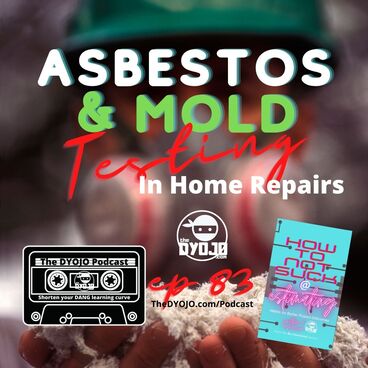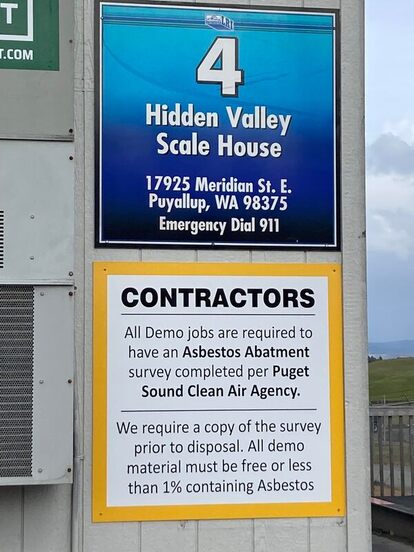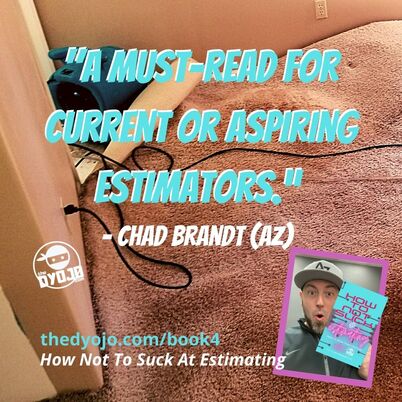|
Have you heard the saying, "You can have it good, fast, or cheap, but you have to choose two." While it seems like a good idea to get the best deal when shopping for a kitchen or bathroom remodel, in the current market there is not a shortage of work for quality contractors. If you are consumer and are getting more than 2 or 3 bids, you will probably find that many contractors won't even bid. Consumers and contractors should focus on is value when determining the cost of a remodel project. The Best Price for Home ImprovementThe best price is not the cheapest, the most expensive, or the middle of the pack. Some contractors can do it cheaper than their competitors and do it well. Unfortunately, a contractor that does not know how to properly price their services likely is not covering all of their obligations such as taxes, overhead expenses, and investing in the long term growth of their business. If you are a contractor and doing work for less than market averages as a strategy to get you more work, stop and think for a minute about whether you are profitable.
The Best Bang for Your Buck When RemodelingConsumers and contractors should focus on value. As a contractor, what value are you brining to your clients and are you doing a good job of communicating why your process and pricing unique? As a consumer, you want to find the contractor who fully understands your vision and can best work with your budget. Neither contractors or consumers win when corners are cut in order to cram an unrealistic scope into a underfunded budget.
Unrealistic Expectations for RenovationAs I share in my upcoming book, I think much of the modern consumer mentality is shaped by home improvement shows. What the customer expects is that we can walk through a house in five minutes or less and tell them, “This will cost $1,500 (seems like this is the magic number for everything) and my crew can start this afternoon.” Unfortunately this is not how things work in the real world. If you need to prove this to a client, you can find stories like this one from Fast Company that reveal these shows are selling “fantasy at best and nightmare at worst”.
0 Comments
Early feedback from peers in the water damage restoration industry who have read portions of Jon Isaacson's fourth book, How Not To Suck At Estimating: Habits For Better Project Outcomes.
The Target Audience for this book:
This book will also be a course offered through the Restoration Technical Institute (RTI). Keep your eyes open for the release in 2022 and reserve a copy through the webpage for BOOK 4.
 Are you aware of the rules and regulations for testing materials such as wallboard, texture, and floor coverings prior to performing any demolition work? On the latest episode of The DYOJO Podcast (#83) we discuss the importance of identifying and mitigating hazards during water and fire damage restoration projects. There are broad rules such as those in the OSHA General Duty Clause, "The General Duty Clause from the OSHA Act of 1970 requires that, in addition to compliance with hazard-specific standards, all employers provide a work environment "free from recognized hazards that are causing or are likely to cause death or serious physical harm." There are also many specific rules regarding lead and asbestos sampling which are regulated by various entities such as Labor and Industries (LNI) in Washington State. We discuss some of these elements further in a recent article from The DYOJO Blog - thedyojo.com/blog/asbestos-testing-requirements-for-water-damage Many of the safety practices that contractors follow for mold remediation originate with asbestos abatement protocols. We discuss some of the resources for these topics including:
Project your team members, your customers, and your organization by educating yourself and your clients on the best practices and regulatory compliance associated with property restoration. THANK YOU TO OUR SPONSORS: Restoration Industry Association (RIA) Restoration Technical Institute (RTI) Office Services by Brandi Institute of Inspection Cleaning Restoration Certification (IICRC) THURSDAYS ARE FOR The DYOJO Podcast - INFOtainment to help you shorten your DANG learning curve. New episodes of The DYOJO Podcast are released on Thursdays via video through YouTube and/or audio is distributed through platforms such as Apple, Spotify, Google, etc. READ MORE in The DYOJO Blog Additional Resources from The DYOJO:
 Do you know the asbestos testing requirements in your local jurisdiction? In the state of Washington, if you read the LNI (Labor and Industries) regulations, the letter of the law requires everything, regardless of age, to be tested for asbestos prior to demolition or remodeling. This would apply to water and fire damage scenarios where materials such as wet drywall are being removed. As a contracts you want to do your best to:
Test for lead and asbestos before you do any work It must be understood that these regulations are not suggestions, they are the law and compliance is mandatory. Many restoration contractors are adhering to high standards and best practices, yet they encounter pushback from insurance representatives or clients who are unaware of these compliance factors. Homeowners, adjusters, and property managers will benefit from documentation that educates them on the responsibilities of all parties to adhere to testing requirements. I was discussing this with a local mitigation contractor who was being questioned by a representative from the insurance company on a claim. It may be that this person has never heard of these laws or encountered a contractor charging for them, so we forwarded this citation from LNI in Washington, “Building owners and construction contractors both share responsibility for asbestos testing when doing work on the building. A good faith inspection for asbestos, performed by an AHERA certified building inspector is required before any remodel, repair, removal, or other work that could disturb suspect materials.” Educate homeowners and property managers on their responsibilities Previously we wrote more extensively on this topic for an article in Restoration and Remediation (R&R) Magazine on the responsibilities of property owners, property managers, and contractors. You may find that content helpful in your efforts to educate various parties during an insurance claim. For additional reference, see the picture attached to this article which was taken at our local landfill in Puyallup, WA. The landfill requires proof of clearance following asbestos testing prior to being able to dispose of worksite debris. At times citizens of the United States joke that Florida is another world. The current insurance mess in The Sunshine State would point to one area where this is statistically accurate. More specifically, insurance claims lawsuits. Current Governor Ron DeSantis recently cited statistics demonstrating that his state generates 9% of property insurance claims but is the clear leader with 79% of the nation’s homeowner insurance lawsuits. In response, the Governor has called for a special session on property insurance, declaring that Florida citizens need assistance in the face of ever-rising premiums. While anyone who has insurance should be asking, what can we learn from this situation, what most observers are asking, is who can/should we blame? Insurance Companies? Senator Gary Farmer, a Democrat out of Ft. Lauderdale points the finger at insurance companies who routinely deny claims. He is a trial lawyer and stated, “We must protect homeowners in Florida by calling a special session to address our state’s property insurance crisis, and the only way to effectively do so is to ensure that insurers are held accountable to their obligations to their customers.” According to Insurance Journal, Florida’s domestic marketplace lost $1 billion during the first three quarters of 2020 which is reported to be more than double its underwriting losses in 2019. While the concern expressed by many is to protect the consumer from excessive rate hikes, the driver appears to be losses incurred by the insurers. Contractors? As chief spokesman for the Insurance Information Institute, Mark Friedlander, throws shade upon, “Bands of unscrupulous roofers, going door-to-door, soliciting claims.” He believes that consumers are being persuaded to sign over benefits to their claims. In scenarios where coverage is denied by the carrier, the insurer settles rather than risk a trial in what Mark believes are, “Frivolous lawsuits by the thousands.” If you listen closely, even Mark notes that claims denials are a factor. In 2021, Florida Insurance Commissioner David Altmaier alerted the Florida House Commerce Committee of what he observed as consistently high litigation trends. According to The National Association of Insurance Commissioners (NAIC) and data from the Florida Office of Insurance Regulation (OIR):
OIR analyzed the data between Florida and other states to attempt to determine the contributing factors. The research was inconclusive in detecting systemic patterns and the office offered no conclusion for the state's outlier status. Attorneys? Altmaier suggested that legislators look into, “Reforming the state’s one-way attorney’s fee statute.” They want to enable policyholders to retain their rights to filing lawsuit but remove incentives for attorney, “To file illegitimate claims.” In 2019 the state enacted assignment of benefit (AOB) reforms which he believes, “Preserves important consumer protections, while providing a framework to ensure litigation brought against insurance companies is legitimate.” Many argued leading up to 2019 that the AOB was at the root of rate increases. As such, consumer protection was the flag under which the calls for reform were waving. Yet, even with these reforms, Barry Gilway, president and CEO of Citizens Property Insurance, states, “The reality is, while AOB is going down, first-party litigation is going up.” If I understand this correctly, this means that AOB, which allowed contractors (third-party) to sue the carrier on behalf of, or in the first-party position, is now down but policyholders, the first-party contract holder with the carrier, is now suing directly? Florida? If the above is true, consumers in Florida are dissatisfied with the actions of their carriers at the time of claims processing. As we stated in the opening paragraph, Florida is otherworldly as it is home to a buffet of natural disasters, including hurricanes, tropical storms, tropical depressions, tornadoes, wildfires, and floods, the state has several unique insurance-related operational factors, a few of which include:
We mentioned the “consumer protections” language which drove the AOB conversations and now they are the same concerns underlying this next round of reforms. Take a look at what proponents say about Senate Bill 76 and help me discern who is being “protected”:
Protection From Whom? Do the three items above protect the consumer or the carrier? The insurance companies are clear in who they have on their suspect board as the “bad guys”. If that wasn’t already clear, they blame contractors and attorneys. But they know that few would listen to them if they came out and said that consumers need to be protected from excessive insurance rates while also presenting themselves as the mediators of justice in righting this wrong. How does this logic go, “If contractors and attorneys didn’t charge so much, we (the insurance companies) could charge you less?” Does anyone believe this would be the outcome? If the politicians could pass legislation that would restrict what contractors and attorneys can charge for, then of course, the insurance companies will gladly reduce their prices. Just so we are clear, this is sarcasm. Yet, it appears that this is the consensus among many commenters following this, and similar stories. How Do We Protect Consumers? If the goals is consumer protection, the people must accept their responsibility to educate themselves on what they are buying, what the insurance policy covers, what it excludes, and what to expect during the claims process. As a general rule, it is best for the consumer to do business with people invested in their local market. If you are an insurance policyholder, when you purchase your homeowners policy you should hire a local insurance agent who will walk you through the process and is committed to being actively involved whenever there is a claim. The opposite of this is shopping for the lowest rate, without understanding the coverage limitations, and/or hiring an agent who will direct you to a 1-800 number for claims filing while washing their hands of the process. If you are a homeowner who has experienced damage, find a contractor who is based and active in the local community. You want to hire people who are going to care about their reputation when it comes to work quality and ensuring project completion. While it is fun to talk about blame, the reality is that there are bad actors in each of the groups we discussed. Homeowners are not excluded from being in that category. There are plenty of opportunistic insureds who believe their policy should do more than restore them to pre-loss conditions during a claim. In the rush to assign blame, often the loudest voices, or the deepest pockets, will prevail in painting the picture of who the culprit is. Consumers must pay attention to and play and active role in understanding that insurance is a key factor in protecting your largest asset, your home. Listen for fear tactics that attempt to persuade you, and your elected representatives into doing the wrong things for the right reasons. We should all be careful not to make a bad situation worse by restricting consumer options in future circumstances. Are you interviewing for an open project management position? What questions can you ask that will help you determine if this candidate has the potential to add to your unique culture, serve your clients with an excellent experience, and bring projects in on budget? We have been working through six key questions that we believe will help you get a well-rounded perspective on whether you have the right candidate for your organiztion. Project Manager Interview Question #1Our experience and our target audience is owners and managers in the property restoration industry. Many of these questions are readily adapted to project management in any of the disciplines in the skilled trades. You can learn more about developing your project management process, skills, and tools for development in Jon Isaacson's book - So, You Want To Be A Project Manager? The first question is designed to spark conversation, it is not meant to be a trick question or a trap for the candidate. We want to know what this person knows about the insurance claims process, as it is unique to the property restoration industry.
|
Words
The DYOJO - helping contractors shorten Archives
June 2024
Categories
All
EstimatingMarketingInsurance ClaimsLeadership |
|
| |||||||


 RSS Feed
RSS Feed
